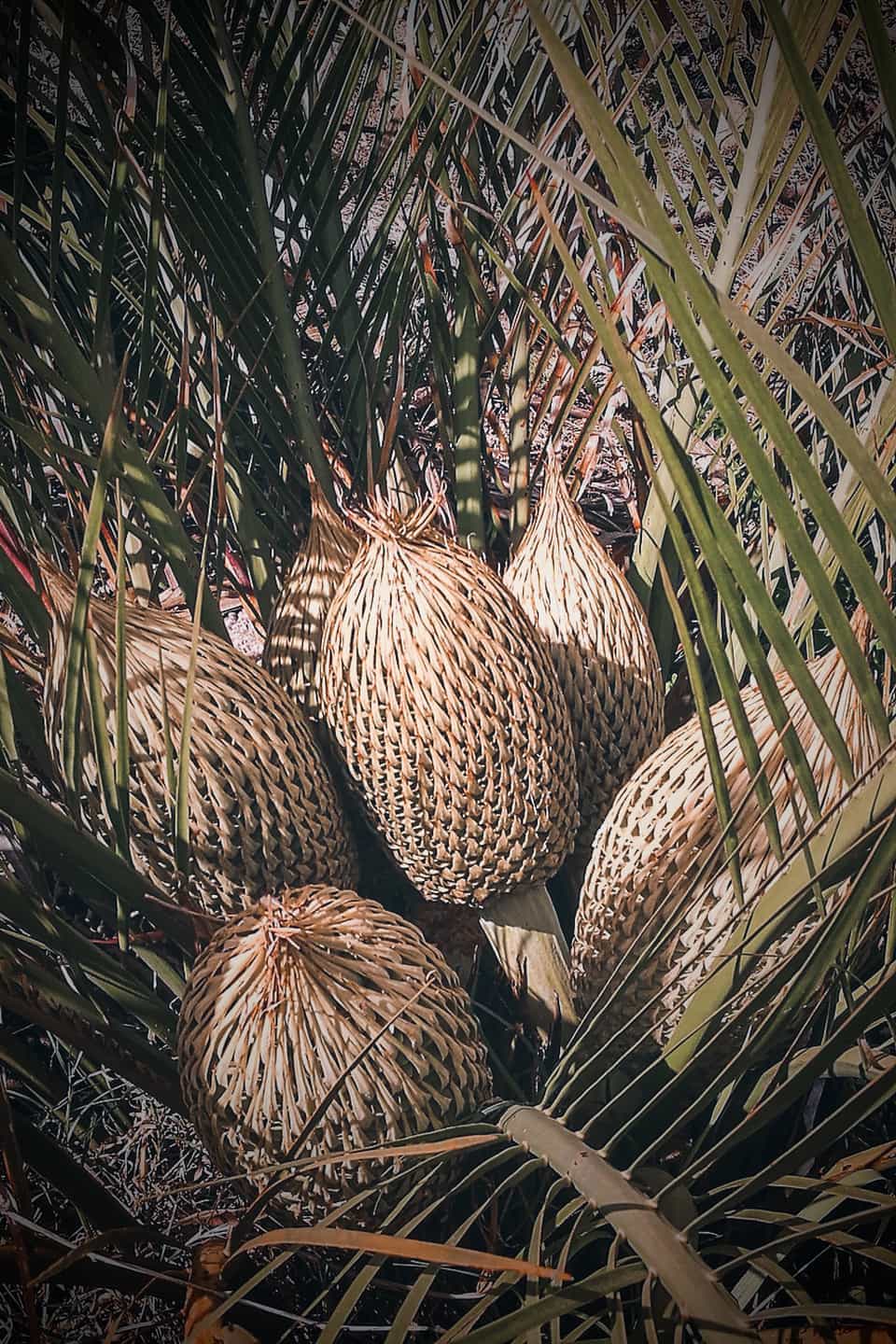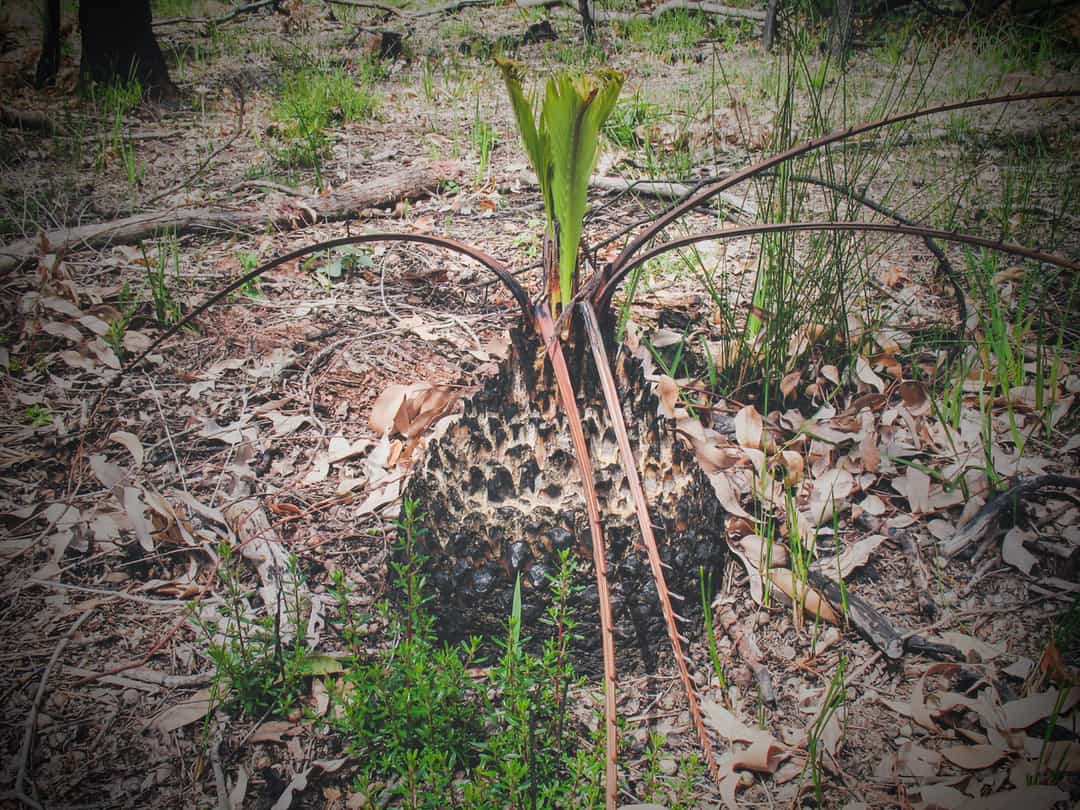Jeeriji, The Ancient Wonder
Zamia Palm
Nestled deep in the heart of the southwest , lies a plant that has captured the hearts and minds of the local Nyungar people for generations. Known as Jeeriji in their native tongue, the Zamia plant (Macrozamia riedlei) is more than just a shrub. It is an integral part of their culture and way of life, with its uses ranging from food to medicine.
Family: Zamiaceae
Scientific Name: Macrozamia riedlei
Nyungar Name: Jeeriji
Common Name: Zamia Plant
Taxonomy:
The first description of the Zamia plant species was published by Friedrich Ernst Ludwig von Fischer, who named it Cycas riedlei, in honour of French gardener Anselme Riedlé. The description was based on a specimen collected at King George Sound and held at the Paris Museum. Later, Charles Gardner revised the species and assigned it to the genus Macrozamia. Gardner cited specimens obtained from various locations south of Perth, including Collie, Manjimup, and Bow Bridge. An orthographic variant of the species name, M. reidlei, was used by Gardner in his revision.
The colonists applied the term zamia and zamia palm to the once-common plant, and these names continued to be used in some listings and guides. The Noongar people have their own names for the plant, including baian, djiriji, koondagoor, and quinning. Different names are applied to various parts of the plant and its products, most of which have had some application as food or material resource.

The Zamia plant is a primitive gymnosperm, meaning it produces seeds without flowers or fruit. It has been around for over 200 million years and has survived multiple extinction events, making it a true living fossil. In fact, the Zamia plant is so ancient that it coexisted with dinosaurs.
The plant has a unique appearance, with a stout, woody trunk that can grow up to 2 meters tall, topped with long, feathery fronds. Its leaves can grow up to 2 meters long, and the plant can produce cones that contain up to 300 seeds.

The Zamia plant is native to the southwestern region of Western Australia and can be found in a variety of habitats, including coastal dunes, heathlands, and woodlands. It prefers well-drained, sandy soil and can grow in both full sun and partial shade.
The plant has adapted to the harsh Australian climate and can survive extended periods of drought. Its root system is shallow but wide, allowing it to take in water from a large area. It also has a unique mechanism to protect itself from fire – its trunk is covered in a thick layer of spongy bark that can resist flames.
The Zamia plant has been an important source of food and medicine for the Nyungar people for generations. Its seeds, which are toxic if not prepared correctly, can be roasted or ground into a flour and used to make bread or cakes. The Nyungar people also use the plant's stem as a source of starch, which is extracted by grinding and soaking it in water.

The plant's medicinal properties are also well known. The Nyungar people use the roots of the Zamia plant to treat headaches, fever, and other ailments. They also use the plant's resin to treat cuts and wounds.
The plant's cultural significance cannot be overstated. The Nyungar people have a deep spiritual connection to the land, and the Zamia plant is seen as a symbol of that connection. It is often used in ceremonies and is considered a sacred plant.
Despite its resilience, the Zamia plant is facing threats from habitat loss and overharvesting. As more and more land is cleared for development, the plant's natural habitat is shrinking. Additionally, the plant's seeds are often collected illegally for commercial use, putting further pressure on the plant's survival.
Efforts are underway to protect the Zamia plant and its habitat. The Nyungar people are actively involved in conservation efforts, working to protect the plant and its cultural significance. The Western Australian government has also implemented measures to protect the plant and its habitat, including restrictions on harvesting and land use.
Did you know?
For many, many years, the Catholic Church of Western Australia has substituted the fronds for those of palm trees on Palm Sunday! The ancient form of the plant inspired the poet Judith Wright to pen these lines.
“Among the complicated birds and flowers
They seem a generation carved in stone.”— Wright, J
Charles Gardner
6 January 1896 – 24 February 1970.
Charles Gardner (1894-1965) was a renowned Australian botanist who dedicated his life to studying the flora of Western Australia. He is perhaps best known for his seminal work, "Flora of Western Australia," which he began in the 1920s and continued to work on until his death.
Gardner was born in London, England, and immigrated to Australia in 1910. After completing his studies at the University of Western Australia, he joined the Western Australian Herbarium in 1916 as an assistant. He quickly developed a passion for botany and began collecting plant specimens from all over Western Australia.
Gardner's work as a botanist was groundbreaking in many ways. He was the first person to collect many of the plant species he studied, and his meticulous attention to detail and classification helped establish Western Australia as one of the world's biodiversity hotspots.
In addition to his work on the "Flora of Western Australia," Gardner authored many scientific papers and monographs on Australian flora. He also made significant contributions to the study of plant ecology and conservation, advocating for the protection of many rare and endangered plant species.
Gardner's work earned him many accolades during his lifetime, including the Clarke Medal of the Royal Society of New South Wales and the Gold Medal of the Royal Society of Western Australia. His legacy continues to this day, as the "Flora of Western Australia" remains a vital resource for botanists and conservationists alike.
"The value of a herbarium is not only scientific but also ethical, as it constitutes a deposit of unselfish labour which has been put forth in the interests of others and posterity"
– The Flora of Western Australia: Volume I, 1952


Charles Gardner! One of the many inspiring Botanists of the South West.